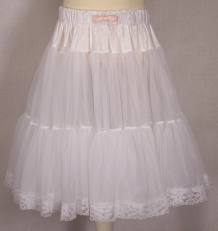Hosiery, or “hose”,
refers to legwear, or apparel worn specifically on the legs or feet.
Traditionally made by a “hosier”, the fabrics used for hosiery are knitted and
of varying thickness and weight. This thickness is termed “denier”.
Denier is a
term which defines how much light will pass through the fabric. Lower deniers,
between five and fifteen, describe hosiery which is sheer. Above forty denier,
the fabric is dense; at one hundred denier, no light will pass through at all.
Most women and
men will wear some form of hosiery; these days
the term broadly covers
stockings, pantyhose, knee highs, socks, leggings, tights, bodystockings, and
even legwarmers. But where did it all begin?
Traditionally,
hosiery was worn for warmth.
·
The
term “hosiery” comes from the Anglo-Saxon “hosa”, meaning “tight legged trouser”.
“Stocking” originates also from Anglo-Saxon; “stoka” meaning “stump”. “Sock”
comes from the Latin, “soccus”, which was a soft indoor slipper.
·
Even
Neolithic man knew how to spin yarn and fibres; in time cloth was woven and
hand knitted. The first examples of knitting as we know it today date from
~1000AD; thought to have originated in Arabic nations, it was introduced to
Britain by the 1200s.
·
A
pair of hand knitted red wool socks was found in an ancient Egyptian tomb sometime
between 400 and 500 AD. They tied by a cord at the top to hold them in place at
the ankle.
·
Romans
were documented by author Hesiod as having covered their legs with strips of
leather or cloth tied on.
·
Charlemagne
wore leg bindings in the period between 770 and 810 AD.
·
Young
Venetian men in the 1300s wore silk leggings underneath short jackets. These
leggings were usually brightly embroidered, and scandalised the older Venetians
of the time.
·
Queen
Elizabeth I received her first pair of silk stockings in 1560.
·
After
the invention in 1598 of the first knitting machine by Englishman William Lee,
hosiery was knitted from wool, silk, and cotton. Queen Elizabeth I was
presented with a pair of black silk stockings, by which she was extremely
impressed and requested more. She deemed
that the knitting machine was an English national treasure!
Stay tuned for Part 2...


















































